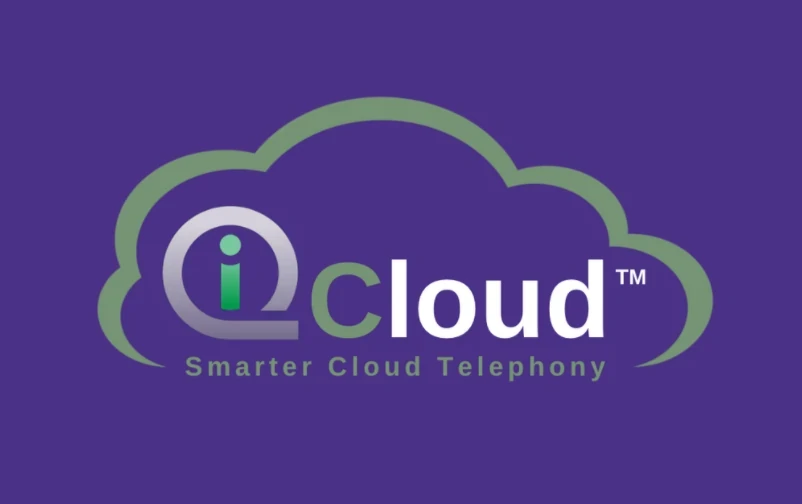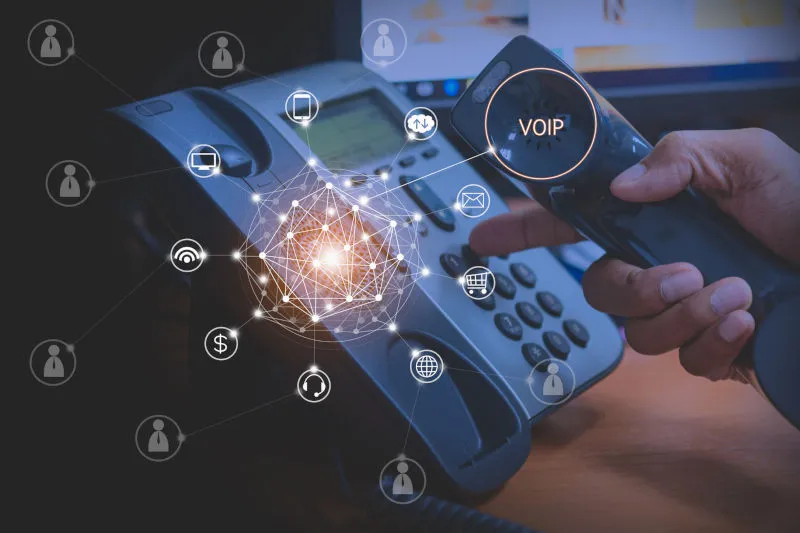Enjoy a personalized, stress-free experience with sipIQ
No other SIP solution or provider gives you the security and simplicity you need to empower your business.
Our customized communication solutions bring you a fully-managed, true-cloud system that will ensure total business continuity.
Take a look at the services that make us different

Hybrid Cloud
Your communications platform is secure and always ready in your private cloud
In the event of a local outage, your sipIQ cloud instance will handle all calls and routing.
All applications continue to function as usual including auto attendant, voicemail, etc.
The switch-over is seamless and at the ready, never disrupting your communications.

White Glove
sipIQ customers receive uncompromising quality in our service, solution, and platform
The sipIQ install team provides a turn-key experience, coming onsite to perform installation of all hardware.
Once in place, your fully managed solution includes 24-hr response time on all requests.
We coordinate with your existing carrier, your IT staff, and facilities management, making sure nothing is left to chance.

U.S. Based Support
sipIQ provides the highest level of support in the business, including a 24-hour response guarantee
The entire solution is managed by the sipIQ team.
IT departments love us, and yours will, too.

Dedicated Team
Design and implementation are handled 100% by the sipIQ development team
You don’t get mailed a box of phones as you would with hosted solutions.
sipIQ will work the way you are used to doing business.

Security
sipIQ delivers multilayered solutions to provide our customers with the highest level of security
24/7/365 monitoring against hacking and fraud.
sipIQ can be configured for compliance with GSA, HIPAA, PCI, Safe Harbor etc.
A sipIQ gateway to connect every location to its own private cloud.

Disaster Prevention
sipIQ provides a complete disaster prevention solution with each install
sipIQ is not vulnerable to a local outage or a geographic outage.
Your sipIQ local instance mirrors the system in the cloud and both are controlled and monitored in our NOCs and clustered in one of our secure data centers.

IQCloud
IQCloud offers the features and functionality of an on-site PBX combined with the flexibility and scalability of a hosted IP Telephony system
With sipIQ, your private cloud utilizes its own Cloud gateway that incorporates all the security, survivability, and smart features into one purpose-built platform to deliver the sipIQ difference.
30-50% lower cost to operate vs premise-based equipment.

Simple Pricing
sipIQ has all the features you need at the price point you want
Voicemail
Voicemail to email
Visual voicemail from a web browser
On demand one-touch call recording accessed via private web portal
Message alerts
..and many more

Effortless Adoption
sipIQ adapts to your environment while providing access to features you want and need
We provide a simple software client to use the features you need without changing the way you use your phone.
Our included “IQdial” desktop dialer and “IQchat” IM and group chat client are easy to use, and allow you to access unified communications features when you need them.

Peace of Mind
24/7/365 network device monitoring on your voice LAN from our Network Operations Centers
sipIQ provides seamless transitions from your primary connection to your backup – even a POTS line or cellular backup.
Instead of sharing a connection in a single cloud instance, sipIQ provides QoS and Traffic Shaping from end to end to a meshed private cloud.

Future Proof
sipIQ is the last system you’ll ever need. As sipIQ evolves, so does your business, without an increase in fees.
The sipIQ roadmap is currently testing web-based video conferencing.
Clients will be able to access high level features such as this, without the need to install expensive hardware or software, or pay for expensive licenses.
Looking for a phone system that truly meets your needs?
sipIQ is the opposite of cookie cutter. We take a personalized approach to adoption and implementation, and are the only carrier-agnostic hybrid cloud and unified communications provider that ensures total business continuity.
Check out our Handset main Features
Voice to Email
Upon receipt of a voicemail message, sipIQ sends a digital copy to a user’s specified email address.
This feature allows users to listen to their voicemail messages from anywhere via a web browser, without having to physically use their desk phone.
Conference Bridge
Allows a group of people to participate in a phone call. The sipIQ Bridge allows participants to dial into a virtual meeting room from their own phone. Meeting rooms can hold dozens, even hundreds, of both internal and external participants. Conference rooms can be moderated by an admin user. An external number can be used to call into a Conference Bridge.
Message waiting indicator
This feature notifies the user of a new or unheard voicemail message left on the extension associated with the phone, indicated by illuminating an LED on the phone. The lamp will remain lit (and in some cases blinking) until the user has listened to the new message(s) on the extension.
Parking Lots
Call parking allows users to place a call in a call parking lot with an assigned number, any user with any phone on the network can pick up this call simply by dialing its number. The party who is placed in the call parking lot will have on-hold music played to them while they wait. The system assigns specific parking lot numbers upon transfer. Calls placed in a parking lot will automatically “ring back” the extension that placed the call after a designated period of time.
Paging
Paging allows one user to make an announcement to a group of users simultaneously. This differs from the intercom feature because it is a one-way audio signal, meaning those being paged are unable to speak back to the pager.
Call Transfer
Users can transfer calls from their phone to voicemail, another user, an external number, and to other destinations. Call transfers can be performed two ways. The first method is called a Blind Transfer, which connects the call to the destination number immediately. The second is called an Attended Transfer, which connects the person performing the transfer with the intended recipient prior to connecting the two parties. This gives the user making the transfer an opportunity to inform the recipient who is on the line before the actual transfer is made.
Blacklist
This feature allows you block specific numbers from calling into the system.
Do Not Disturb
Allows users to enable automatic rejection of incoming calls to their extension. All incoming calls will be forwarded to the user’s “busy” voicemail announcement.
Music on Hold
This feature fills the silence that would be heard by telephone callers who have been placed on hold or are currently in a call queue. This can be customized to play music specific to the type of call placed, or provide the callers with a number of custom recorded messages relating to the potential nature of the call.
Intercom
Allows users to contact another user, ring group, or the entire network directly and immediately through the speakerphone. All parties are able to speak and listen to each other.
Announcements
This feature is used to send a call to a destination that will play an informational message to a caller. After the message is played, the call will proceed to its intended destination.
Private Conference
A private conference bridge can be set up for an individual user. Callers will be required to enter a PIN when prompted to connect. An external phone number can be assigned to a bridge.
Day Night Mode
Do you want all calls to forward to your company voicemail after business hours? Should calls be routed to an emergency service after 10pm? This feature allows users to route calls based on the time, day of the week, or month. Calls can also be routed differently after business hours or during weekends and holidays.
Directed Call Pickup
Allows users to see and pick up calls for other extensions. This feature can be configured for a user to pick up a call for a specific extension, even if that extension is not part of the user’s call group.
Disaster Prevention Ready
Uses a set of policies and procedures to enable the recovery or continuation of vital technology infrastructure and systems following a natural or human-induced disaster. Telephones will continue to route calls based on your plan and the technology and resources still available.
Feature Codes
Feature codes can be dialed to activate and deactivate particular features available on your sipIQ system.
Follow Me
This feature enables users to route their calls to a series of alternate extensions/external destinations (such as mobile or landline) should a call persist longer than a specified number of rings/seconds.
IVR Digital Receptionist
Interactive Voice Response interacts with all incoming callers. An automated message informs callers of available options, and prompts them to make selections using their keypad that will route them to the appropriate party based on the nature of their call. Callers can be routed to extensions, announcements, ring groups, voicemail, etc.
Miscellaneous Destinations
This feature is used to create a destination to which you can route calls from another feature or module. For example, a destination can be created that dials an announcement, and then forwards to a mobile telephone number. This can be used in conjunction with an IVR.
Extension Directory
This is a menu system that allows you to look up any extension on the sipIQ system.
Softphone
This application allows users to make telephone calls over the internet while being recognized as part of the network. Park, Hold, Record, Transfer and 12 Programmable Keys/BLFs are standard.
Ring Groups
This feature enables users to have multiple phones ring when one extension is dialed. The extensions involved are customarily assigned to a group, such as sales / operations / support, and when dialed, all phones specified in the group will ring simultaneously. Additionally, the ring options can be configured to: ring all, ring sequentially, ring first available, and more.
Whisper/Listen/Barge
These features allow specific users to listen and/or place themselves into other users’ calls. Whisper allows a supervisor to silently instruct an agent who is actively on a call without the other party hearing. Listen allows a supervisor to silently monitor a two-party call, which may be initiated externally or internally. There is no sound to alert the agent being monitored. Barge allows the supervisor who is monitoring the call to enter the conversation. Once joined, the call becomes a full-fledged three way call. All parties can hear one another.
Hot Desking
This feature enables a user to log into any phone on your sipIQ™ system and have their user profile and settings populate that device. This is often employed to allow multiple users to log into the same device at different times of day. This is also used in workplaces where not all the employees are in the office at the same time, or not in the office for long periods at a time.
Custom Music on Hold
Customer-provided customized music can be played on system, provided it is not illegally obtained copyrighted material.
Call Recording
This feature enables users to record the call they are currently on for review at a later time. System hardware can be upsized to record all calls and download them to secure storage nightly. Legal compliance for the financial sector is available. No touch, automated data retention, archiving, and disposal of recorded media.
Security Pins
This feature is used to require specific users or extensions to dial a password before an outbound call can be placed. Passwords can be required on all calls or only on calls to certain numbers.
Queues
Enables users to place callers into a structured on-hold system of priority so that the caller with the highest level of urgency (usually the caller on hold the longest) is routed to the first available user before all others. Call queues are extremely useful when handling a large number of incoming callers with a limited amount of resources.
Call Back
This feature allows the caller to instruct the sipIQ system to hang up the call they just attempted, retain the phone number they called from, and then call them back when the intended party is available.

IQDial
The sipIQ dialer is a convenient application that allows users to dial directly from their desktop. Once loaded, it remains in the system tray for easy access, and can be configured to stay open on the desktop for even quicker use. Simply copy any number on your screen, click on the dialer and select dial. Recall the last dozen numbers dialed, enable call recording with one click, and redial, all from an easy to use interface.